On a visit to the Bhubaneshwar Museum a few years ago, I saw a stone inscription, or a replica, which stated, briefly, that Devanmpiya Priyadarshi visited this place in his 20th year. This was where Buddha Sakyamuni was born, and he exempted the Lumbini villagers from tax.
What caught my attention was the claim that the inscription had been discovered in 1928, in Kapileshwara, a village then one mile away from Bhubaneshwar. The general opinion I came across was that it was a fake. But I found a detailed comparison of this inscription and the one found by Fuhrer in Rummindei in Nepal, written by Chakradhar Mohapatra, “The Real Birthplace of the Buddha”, 1977, and also by Ajit Kumar Tripathi, “The Real Birthplace of the Buddha Yesterday’s Kapilavastu, Today Kapileswar”, OHRJ, Vol. XLVII, No. 1.
However, this discovery was forgotten by many and ignored by some, just laughing it off as a fraud.
A new book “Gautam Buddha (Born in Lumbini – Kapileshwar, Odisha)” was launched on March 13th, 2005, by Dr. Ajit Kumar Tripathi and Dr. Prafulla ChandraTripathi.
“As regards his (Buddha’s) early life from birth to renunciation, we find great variations in the Pali and Sanskrit accounts. References to his ancestry, parentage, place of his birth and the period of his childhood and youth have so many stories and legends webbed into them that it becomes difficult to believe as to whether we are discussing a human being or a fictitious hero of mythology.
I read in the new book, “There is often a tendency to bank upon archaeology exclusively for arriving at historical truths where recorded history is either absent or mind-boggling. …There are occasions and instances in history, however, where archaeology has been applied by non-experts and motivated experts who perhaps have an axe to grind or a name to make. They reach conclusions first and search for evidence. If they do not find any, they create them” (Preface).
When we discuss the place of birth of the Buddha, Professor Hajime Nakamura published “GOTAMA BUDDHA” in 1977. In this book the author conducts an exhaustive analysis of both the oldest, most reliable texts and later biographies of the Buddha that contain mythological material. Carefully sifting these texts to separate facts from embellishments, he constructs a biography from the Buddha’s birth through all the stages of his life. In the Preface he explains, “As long as we have to rely upon written documents, the non-mythological Šākyamuni is almost impossible to discover. In order to bypass such limitations and reach the historical man, we have to rely upon solid proof—namely, archeological materials…. all the so-called biographies of the Buddha came into being generations after the time of Gotama. The oldest portions of the Buddhist scriptures do not contain sections which might be considered a biography of the Buddha. Events related to the life of Šākyamuni are merely mentioned fragmentally, since the Buddha’s immediate disciples did not concern themselves with Sikyamuni’s biography. (pages 3-4).
Rummindei in Nepal
The attention of the world was drawn to the discovery of an inscription in a village named Rummindei, announcing the village Lumbini where Buddha was born, that they found an inscription on a pillar found there.
This inscription is claimed to have been discovered in December 1896 in Rummindei, Nepal by former Chief of the Nepalese army, General Khadga Shamsher Jang Bahadur Rana under the authority of Nepalese government and “assisted by” Alois Anton Fuhrer.
About the place discovered in December 1896 in Rummindei, Nepal by former Chief of the Nepalese army, General Khadga Shamsher Jang Bahadur Rana under the authority of Nepalese government and “assisted by” Alois Anton Fuhrer. Rumindei, Nepal, all we have is an inscription said to be done by a “Devanam Priyadarshi”. It is claimed that the place was shown to the person who erected the pillar, by a Buddhist monk. Nothing has been recorded about how the monk knew this was the right place. The other evidence is by visiting Chinese monks, many centuries later. They would have written them from what they heard, and there is no evidence that they had really visited Rummindei. Fa-hien does not mention any pillar at Lumbini. Hiuen Tsiang mentions a pillar but does not say anything about an inscription.
The entire legend about the Buddha’s place of birth in present day Nepal is surrounded by forgery, fabrications, and fraud. The first person who is claimed to have discovered the so-called Ashokan pillar with the inscription was neither a historian, nor an archaeologist. He would not have had any interest in Buddhism or the Buddha. “Dr” Alois Anton Fuhrer was born in Germany, who had a “Doctorate” in Theology. He came to India as a Roman Catholic priest and was teaching at St. Xaviers’ College, in Mumbai. He had learnt Sanskrit and then got a job with the Archaeological Surveyor and then later became the Archaeological surveyor, though he was not an archaeologist.
Over a century later we still accept his word about where Buddha was born. This Fuhrer is reported to have fraudulently incised Brahmi inscripts on stone slabs in the Lucknow Museum. Fuhrer is also known to have been selling Relics to other countries. He sold a Tooth relic of the Buddha to the Burmese monk, U Ma. Fuhrer claimed he found the “Molar tooth of Lord Buddha in a stupa at Kapilavatthu.” When U Ma questioned about the unusual large size of the tooth, Fuhrer had the audacity to reply,” Bhagavat Buddha was no ordinary being, as he was 18 cubits in height (about 27 feet), his teeth would not have been shaped like others at Kapilavastu.”
Many other reports came out to convince the Buddhist around the world that Lumbini was in Nepal. Among such supporting reports were the stupa of Buddha Konagamana. It is strange that the only evidence of the historicity of Buddha Konagamana was found very conveniently close to Lumbini in Nepal. It is not known how the place was identified. Even Lumbini was identified from the inscription Fuhrer is claimed to have discovered. The inscription only says that the place was pointed to king Ashoka by the monk Upagupta, and we do not have any information how Upagupta knew the place, more than a century after the birth of the Buddha. All the excavations carried out till now have not revealed any information, other than that the place has been sacred long before Buddha was born. Tree worship was known to have been practiced for a very long time.
Then there are the famous “discoveries” at Piprahwa, once again close to Lumbini. The claim was about finding relics of the Buddha. W.C. Peppe and Fuhrer were involved.
A tooth claimed by Peppe was taken by Charles Allen to the Natural History Museum in London, where it was found to be that of a pig!
Even Hajima Nakamura is careful not to go into detail about the place of birth, “The garden of Lumbini is the well-known birthplace of Sakyamuni and ancient verse confirms this.” (p 12). He does not identify where Lumbini was.
“Now, for the first time, we have an archaeological sequence at Lumbini that shows a building there as early as the 6th century BC,” said archaeologist Prof Robin Coningham of Durham University, who co-led the international team, supported by the National Geographic Society. So far he has not found any evidence connecting the place to Buddha. Another issue when an archaeologist excavates a site in search of evidence to prove his point, he could intentionally or unintentionally be ignoring or destroying evidence which could prove otherwise.
KAPILESHWAR in Odisha
Even though the Kapileshwar inscription became known to the world in 1928, if the available reports are to be accepted, the slab with the inscription had been on the mud wall of the farmer’s house for several generations. If we accept this, then it predates the discovery of the Rummindei inscription.
If one of the two inscriptions is a forgery, then we have to seriously consider it to be Fuhrer’s “discovery”.
There are two known inscriptions, with nearly similar wording.The inscription found at Rummindei is suspect because of the reputation of the person who discovered it. The inscription at Kapileshwar has been rejected as a forgery by many who had not even seen it.
However, today with all the new digital technology, and with Artificial Intelligence, we could compare the two inscriptions with other inscriptions accepted as done by Ashoka. We could use Optical Character Recognition, CR, Convolutional Neural Networks, CNN, (LeNet, VGG-16, and MobileNet) and other technologies to study them
When there are so many questions about Lumbini and Kapilavastu claimed to be in Nepal, the people in Odisha too have a right to present their belief of the Kapilesvar inscription and Kpilavastu near Bhubaneshvar.
The recent book submits many arguments supporting the claim of Kapileshwar as the place of birth.
Recent archaeological excavations revealed that Lumbini too had been a sacred grove, where deep under the Maya Devi temple they have found probable evidence of pre-Buddhist tree worship. It could have been a place of worship of a tree goddess or a mother goddess, a symbol of Motherhood, for fertility and safe childbirth, and the sacred tree could have been a Sal or Asoka. In that case the space would have been appropriated at a later date, as a Buddhist sacred space with Buddha’s mother, Maya Devi as a mother goddess, or a symbol of Motherhood.
With regard to the acceptance of Buddha’s life in India (and Nepal), in a way Anagarika Dharmapala is responsible. He learnt his “Buddhism”, not Buddha Dhamma, from western Christians like Edwin Arnold, and fell for the trap set by the British to set the Buddhists against the Hindus, as Dharmapala fought to claim Budhgaya for the Buddhists. He was captivated by Arnold’s statement, that Buddhagaya should be the Jerusalem.
Sri Lanka
A Buddhist monk, Meewanapalane Siri Dhammalankara Thero, published a book in 2012, trying to prove Buddha was born in Sri Lanka. He argues, based on a statement alleged to be by Buddha himself, in the Mahaparinibbana Sutta, that people should visit four places in their quest to attain Nibbana, which is a total contradiction of Buddha Dhamma.
According to this monk, king Ashoka had learnt Buddha Dhamma from monks who went to India.
Even though the book describes all the places in Buddha’s life as if they had been in Sri Lanka, there has not been any archaeological studies carried out, and no evidence discovered.
This is also a total contradiction of Buddha Dhamma. In the Kalmatta Sutta (Sutra) Buddha’s position on intellectual exploration and free inquiry are explicitly stated:
“Do not believe in something because it is reported. Do not believe in something because it has been practiced by generations or becomes a tradition or part of a culture. Do not believe in something because a scripture says it is so. Do not believe in something believing a god has inspired it. Do not believe in something a teacher tells you to. Do not believe in something because the authorities say it is so. Do not believe in hearsay, rumor, speculative opinion, public opinion, or mere acceptance to logic and inference alone. Help yourself, accept as completely true only that which is praised by the wise and which you test for yourself and know to be good for yourself and others.”
For a person trying to understand Buddha Dhamma and to follow the path, when and where Buddha was born, where he lived, where he attained enlightenment or where he passed away is immaterial. However, for a historian, an archaeologist, an anthropologist, it would be important. Since over the past two centuries, the only archaeological evidence discovered at Rummindei in Nepal is the inscription, claimed to be done by king Ashoka, it is the duty of all academics to try to search in and around the place in Odisha known as Kapileshwar, and also a detailed study of both inscriptions at Rummindei and Kapileshwar to determine which is genuine which is the forgery, if both are forgeries.
About the inscription found at Kapileshwar too, we have the same unanswered question as with the Rumindei inscription.
However, a major issue here is that the UNESCO, British universities, Nepali government have been conducting research and extensive studies at Rumindei, which have so far only yielded that this had been a sacred space long before the estimated date of Buddha’s birth. But no evidence it was the real birthplace.
At Kapileshwar, neither UNESCO, nor the Indian government had made any attempt to do a real archaeological study, to confirm if there is any evidence. Most of all, probably there had been no attempt to find the original location of this inscription, where it had been before it ended up as a part of the mud wall of the hut of this farmer. If, as some believe, this is a part of a larger stone slab, what had happened to the rest of it, where it had been before it became a part of a mud wall, and how this portion ended up with the farmer.
There is one possibility that this person who purchased the inscription from the farmer ensured the farmer’s silence about the original location, to escape the regulations about items of archaeological value.
If this was the real Lumbini village, there should be other evidence around to establish this fact. Without any serious study nothing could be concluded.
With regard to the claim by a few Sri Lanka monks, they would have to confirm the locations and invite archaeologists not only in Sri Lanka, but from India and even UNESCO to undertake research. If not, it would be a waste of time to even consider Sri Lanka as the place of birth.
About both inscriptions, we have still no confirmation that this “Devanmpiya Piyadarsi” is the king recognized as king Ashoka by Sri Lanka chroniclers, and if he had really had it inscribed. So far there is no hard archaeological evidence if there really had been a historical character known either as “Devanmpiya Piyadarsi” or king Ashoka.
Since the place of birth of the Buddha is not important for anyone trying to follow the Dhamma explained by Buddha, it is only the historians who would have to use all available technology and resources today to confirm if Buddha was born at Rummindei in Nepal, Lubini near Kapileshwar in Odisha, or in Sri Lanka. At least in Nepal and India there is some evidence based on the inscription, but in Sri Lanka, so far there is no such evidence.
Date of Birth
UNESCO claims “The Lord Buddha was born in 623 BC in the sacred area of Lumbini located in the Terai plains of southern Nepal, testified by the inscription on the pillar erected by the Mauryan Emperor Asoka in 249 BC.”
There is no evidence about the year of birth as 623 BC.
The inscription mentions a “Devānaṃpiyena Piyadasina”, and there is no evidence that it is the so-called “king Ashoka”
How did UNESCO arrive at the date 249 BC?
- Ceylonese Long Chronology: c. 624 – c. 544 BCE
- Corrected Long Chronology: c. 567 – c. 487 BCE
- Indian Short Chronology: c. 448 – c. 368 BCE
- Modern Chronology: c. 563 – c. 483 BCE
“Up until the 20th century CE, Buddha’s dates were accepted as c. 624 – c. 544 BCE (the Ceylonese Long Chronology) which was then revised to c. 567 – c. 487 BCE based on the edicts of the Mauryan king Ashoka (r. 268-232 BCE). These dates, however, differ significantly from the Short Chronology of Indian tradition which cites c. 448-368 BCE and was accepted based on the belief that Buddha died exactly 100 years before the coronation/consecration of Ashoka.” (https://www.worldhistory.org/article/493/the-dates-of-the-buddha/)
Basing Buddha’s chronology on Ashok’s chronology leads to more confusions, because so far there is no archaeological evidence of a historical character named Ashoka or that the inscriptions by a character named Devanampiya or Piyadassi.
Also, if UNESCO is interested in this search, shouldn’t they first confirm the year when Siddhartha Gotama as the Buddha, was born.
*

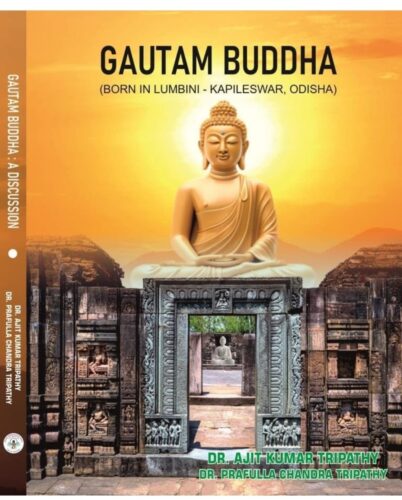

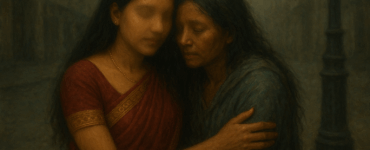
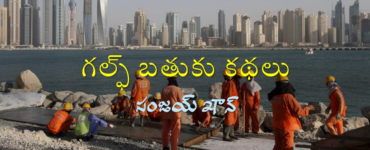
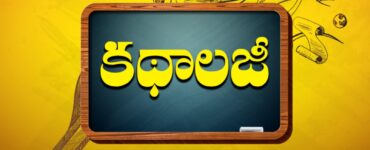
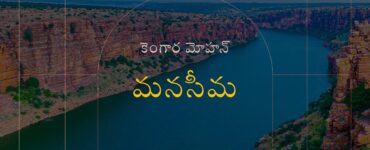


Add comment